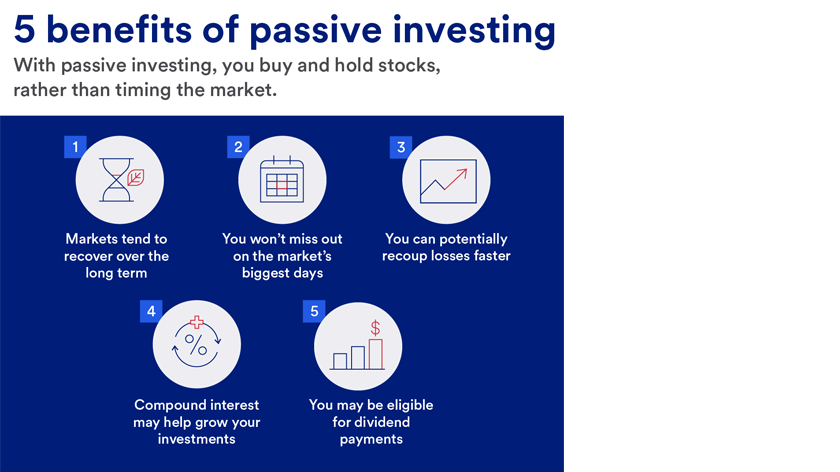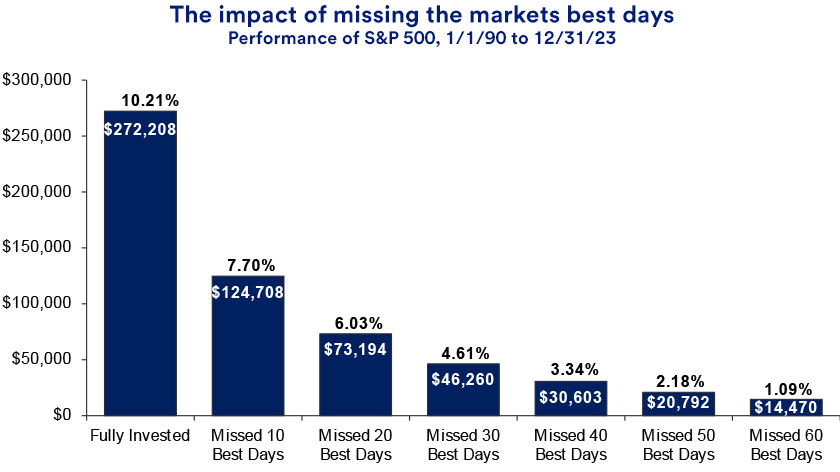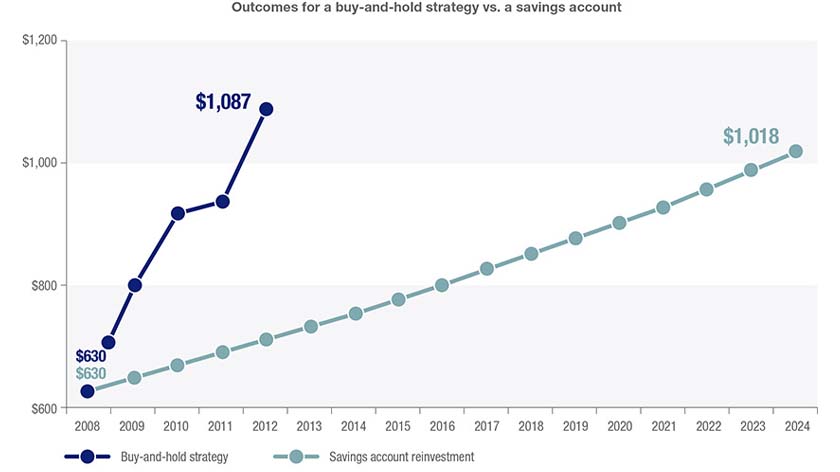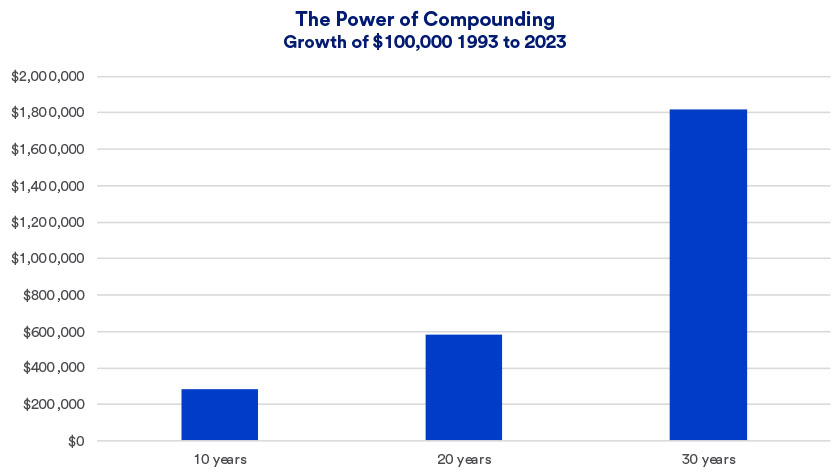5. You won’t miss out on dividends
Investors often try to wait for the “right” time to start putting money into the stock market. But in doing so, they sacrifice an important opportunity: collecting dividends.
Don’t underestimate dividends. Even if stock dividend yields seem modest, they add up over time. “If we look over multiple business cycles, dividend reinvestment often represents one-third to 40% of an equity investment’s total return,” says Haworth.2
Many investors choose to automatically reinvest dividends, purchasing additional shares that earn additional dividends. In this way, dividend reinvestment helps you leverage the magic of compound returns.
There are potential downsides to this approach. Automatically reinvesting dividends takes away the opportunity to put that money to work in other investments that might prove more productive. Also, for investments held in a taxable account, even if dividends are reinvested, they are subject to current taxation. Be sure to check with your tax advisor.
If saving for retirement is your primary investment objective, you might want to turn off dividend reinvestment once you’ve stopped working. Instead, you can collect the dividends paid as cash distributions that you can put toward living expenses. Before retirement, however, reinvesting dividends can help maximize your gains and set you up for the potential to receive higher payouts in the future.
Passive investing: Strategies for buy-and-hold investors
The two primary buy-and-hold investing options are:
- Lump sum investing. You invest a large chunk of money all at once. You might have a lump sum of cash from the sale of a family business, the sale of company stock, an inheritance or proceeds from an insurance policy claim, for example. The sooner you invest, the sooner you begin earning returns and start the process of accumulating compound returns.
- Dollar cost averaging. With this strategy, you regularly invest a fixed dollar amount in a specific asset. It allows you to actively invest in the market even if you have only a small amount of money to put to work each month.
For example, consider a $300 monthly investment into an index fund that covers a broad range of stocks. When stock prices move higher, your $300 contribution will buy fewer shares. When values decline, your monthly contribution will purchase more shares. In this way, an investor avoids putting a large lump sum of money to work when an investment reaches peak value, and it can result in a lower average price per share, particularly through volatile market periods.
Focus on the long term with passive investing
Oftentimes, emotions can sabotage a buy-and-hold passive investment strategy. Overconfidence might lead you to trade too frequently, while fear of loss might cause you to hang on to investments that no longer support your goals or earn a sustainable return.
However, when you invest more regularly and focus on the long-term, you can feel confident that you’re steadily working toward your goals.
Learn how we approach your long-term investing success.
Equity securities are subject to stock market fluctuations that occur in response to economic and business developments. The S&P 500 Index consists of 500 widely traded stocks that are considered to represent the performance of the U.S. stock market in general. Dollar Cost Averaging does not assure a profit and does not protect against loss in declining markets. Such a plan involves continuous investment in securities regardless of fluctuating price levels and investors should consider their ability to continue purchases through periods of fluctuating price levels.







